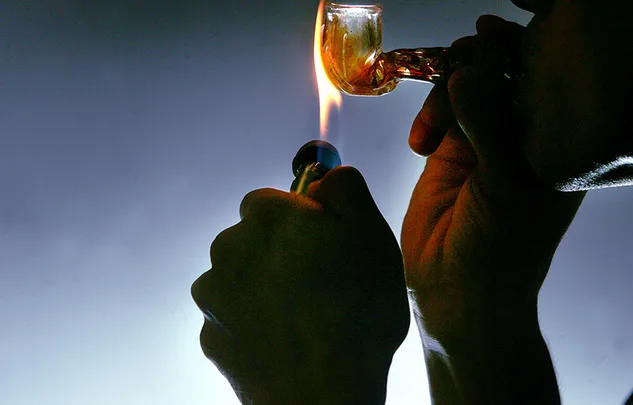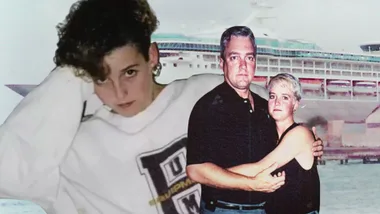When Annette Harloff rented out her granny flat in the utopian Sunshine Coast hinterland, she thought the new tenant was a nice, normal man. But he was slowly poisoning her with the toxic fumes radiating from his crystal meth lab.
“He didn’t sleep a lot. He was up all night rummaging around downstairs and then I was noticing a strong, vinegar-like smell but because he said he was a chef I didn’t take any further notice,” Ms Harloff recalls. “Although, in my head I thought that’s not something you would like to eat. It smelled a little bit strange and strong.” The man occupying her ground floor was in fact cooking. He was cooking crystal methamphetamine, also known as ‘ice’.
Ms Harloff’s home had unwittingly become one of the thousands of clandestine meth labs detected in Australia in the past few years.
This meth cook was emitting caustic and dangerous fumes out of his kitchen window directly into the open window of Ms Harloff’s bedroom at night. “I inhaled them all night. I had some psychotic episodes and panic attacks during the time that my tenant lived downstairs and… thought everybody would come and kill me then I was very disorientated,” she explains. Ms Harloff’s story will feature in a four-part documentary airing on the ABC from Feb 7, ‘Ice Wars’
“I had some psychotic episodes… I thought everybody would come and kill me”
Annette Harloff, Landlord
Australia is the world’s second biggest ice market, with 1.3 million Australians having tried crystal methamphetamine; the drug has overtaken Ecstasy, cocaine and heroin has the national drug of choice.
Ice labs can set up anywhere – not just in warehouses or farm sheds, but in houses or apartments, and not always in low socio-economic areas. You could even be unknowingly renting a property that was once used a meth lab.
According to toxicologist Jackie Wright, methamphetamine residue “hangs around a long time, it seeps into furnishings and air-conditioning units. It is not safe to live among residue”.
“I’ve often come across children living in meth labs”
Detective Sergeant Alison Smith still remembers her first raid on an ice lab. It was a semi-rural property in an affluent area (“Not somewhere you would think a lab would be”), and she was part of a team that stormed a sophisticated operation set up in a detached garage. “There was a family living on the premises. There was evidence that children had been very close to the lab. It was quite sad to think they’d been exposed to toxic chemicals,” she told marie claire.
Finding kids in or near meth labs is all too common for Det. Sgt Smith. The high levels of chemicals they’re exposed to – such as acetone, toluene, red phosphorus, lithium from batteries and sodium hydroxide – are toxic, volatile, carcinogenic. “If only people could see the ingredients that go into making this,” says Det. Sgt Smith. “These kids are not given the best start at life.”
The impact on the local environment was also stomach-churning. “For every kilo of meth that is produced, multiple kilos of waste are generated. In this instance, they had been tipping it into a creek that ran along the back of the premises.”
“We need to be more compassionate towards ice users”
Associate Professor Nicole Lee, National Centre for Education and Training on Addiction, has more credentials than Trump has unfavorable headlines. With more than 25 years’ experience treating drug users and researching addiction, the consultant psychologist is the go-to expert on ice in Australia, if not the world. And she believes the stats on ice, or ‘crystal meth’, have been grossly misreported.
“One of the big myths about methamphetamine, or ice, is that it’s the most highly addictive drug on the planet, that you can get addicted after one use. This is not true,” Professor Lee told marie claire. “About 15 per cent of methamphetamine users are likely to become dependent on it…[compare that to] about 50 per cent of people who use heroin are dependent on it.”
The problem is, she explains, is that once a user is addicted, it’s quite difficult to get off and stay off ice.
“But there isn’t really an ice ‘epidemic’,” claims Professor Lee. “Over the last 10 years, we have seen the [overall] rate of methamphetamine in Australia go down. One per cent of the population in Australia uses ice. That, in anyone’s language, would not be an epidemic.”
Professor Lee believes respect and empathy towards users is a key weapon in the fight against ice, not stigma or aspersions. “Most of the addicts I deal with are pleasant, ordinary people.
“I have treated people from wealthy families who have gone to private school and have high-end jobs. I’ve also treated people from lower socio-economic areas, unemployed for some time… Yes, I have experienced patients becoming angry but if you treat them with respect and listen to their concerns, which are usually pretty valid, you can deescalate the situation. We need to show compassion, and just because a person is taking drugs that shouldn’t change.”
 Getty
Getty









